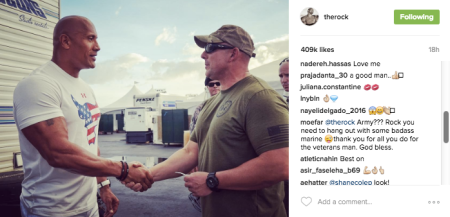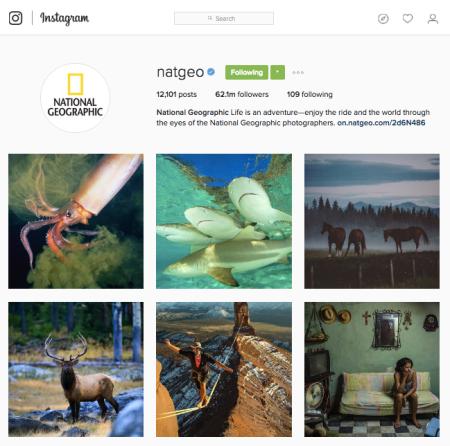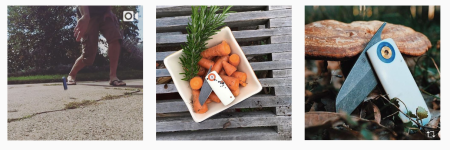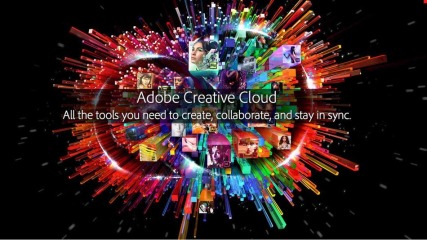
What do The Rock (a.k.a. Dwayne Johnson), National Geographic, and a St. Paul, Minnesota-based custom knife shop have in common?
At first glance, the world’s highest paid actor, a venerable magazine outlet and a one-man knife shop might not have much in common. But they are united by their leading edge use of a popular photo- and video-sharing social media platform. In other words, all three are killing it on Instagram.
The Rock
The Rock’s Instagram stats are beyond impressive. He’s got nearly 69 million followers and his posts regularly receive hundreds of thousands of likes. He posts candid photos and videos from his movie shoots, at home playing with his infant daughter, in the gym, hanging with other celebrities, interacting with fans, and even surprising kids whose Make-A-Wish wish is to meet The Rock. Whatever you think you know about Dwayne Johnson, if you follow his feed for awhile, you’re in for some surprises. Through Instagram’s small screen, the Rock comes across as a multi-dimensional man (actor, fitness enthusiast, Dad, son, community-minded professional, entrepreneur, and savvy business man) and the face of a powerful brand.

Paper (as in Magazine)
National Geographic (natgeo) has embraced Instagram as the modern way to do what it’s always done – share its passion for science, exploration and storytelling to help change the world. The feed is every bit as extraordinary as the images the magazine is known for, but the bite-size content is now accessible, free to all, and currently followed by more than 62 million people. Following the feed is a little like going on a “Choose Your Own Science Adventure.” The images are captivating and inspiring, and the captions (often penned by photographers) help followers appreciate the global, cultural or scientific context of the images.

Scissors (OK, they’re knives, technically)
WORKERMAN (wkrmn) is a one-man operation in St. Paul, Minnesota that makes really, really cool pocket knives. If you’re one of WORKERMAN’s enthusiastic following of 15,000 and counting, then you already know the brand stands for one-of-a-kind design, handmade products and high quality craftsmanship. Follow the feed and be prepared to develop a desire to own your own WORKERMAN creation…or two, or three. What I like best about this feed is that the brand doesn’t follow any set content rules. Instead, the posts are a genuine reflection of what’s happening in the shop that day: new knives ready for sale, videos that show the knives or the maker in action, and regrams of fan photos.

On the surface, these three brands are wildly different. But they share 5 key methods for successful brand-building on Instagram:
- Give your followers a peek behind the curtain. Invite your fans into the real life workings of your operation. Let your followers in on what it really takes to get your product on the shelf, how you celebrate success, what projects or products you’re most excited about, or your works-in-process.
- Be real. Let your brand personality or business culture come through in your posts. Use images and language that paint a realistic picture of your brand. If someone followed your stream for 2 months and then walked into your shop or office, would they feel a connection between the “voice” of your Instagram feed and the reality of meeting you or your team?
- Have fun. The Instagram platform is a visual playground, so let your brand play. People scroll through Instagram when they want a quick mental break. Use images and write captions to inspire and amuse your followers.
- Mix It Up. There’s a lot of talk about creating a consistent feed, but as we see from these three brands, your posts don’t all have to look and feel the same, they just need to look and feel like your brand. Make use of the platform’s key features to let you brand shine in still images, videos and in Stories.
- Give credit where credit is due. Tag team members, creative partners, collaborators and fans when mentioning them in your posts. Regram (share) posts that mention your brand. Nobody wants to see a stream that is 100% self-serving, so make sure some of your posts are about sharing the love.
Which of these Rock, Paper, Scissors methods are you already using? And which will you try next?
Jen Jones is currently a graduate student at West Virginia University in the Integrated Marketing Communications graduate program. She is the founder of Whip-Smart, an IMC firm in Minneapolis, Minnesota. This post originally appeared on her blog, Whip-Smart Marketing.







